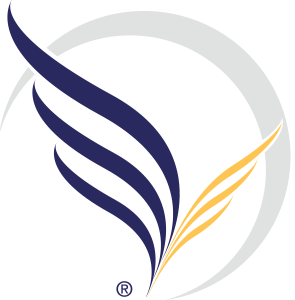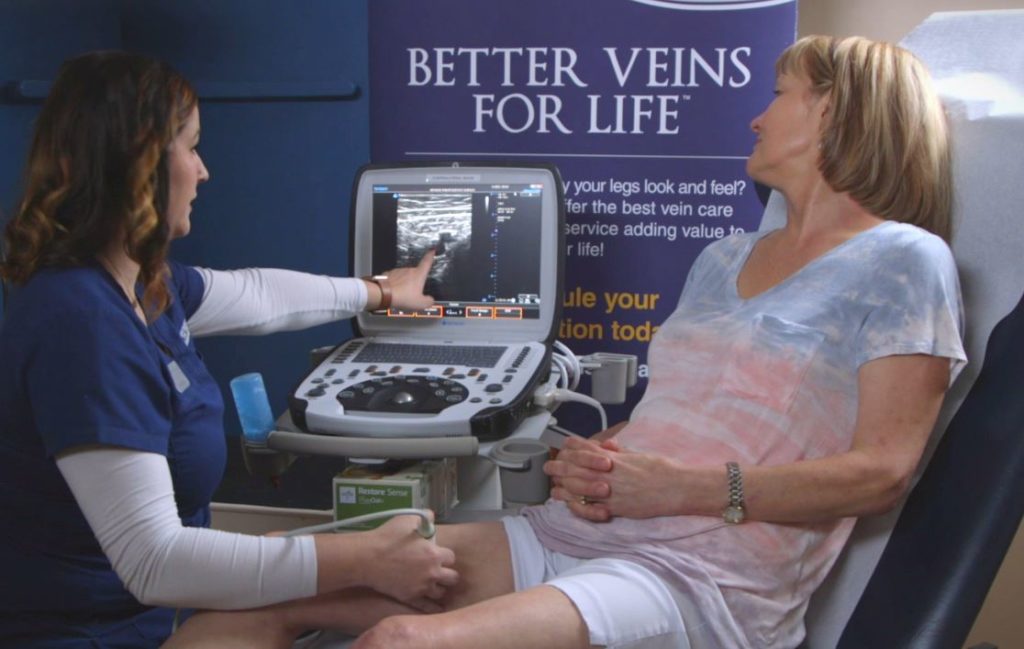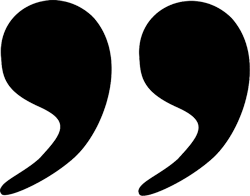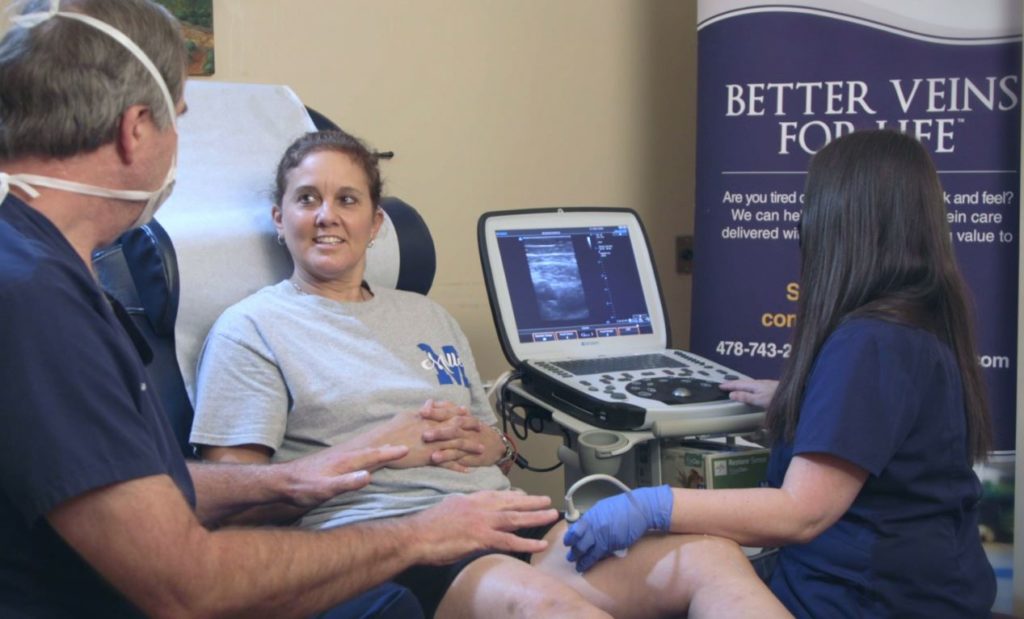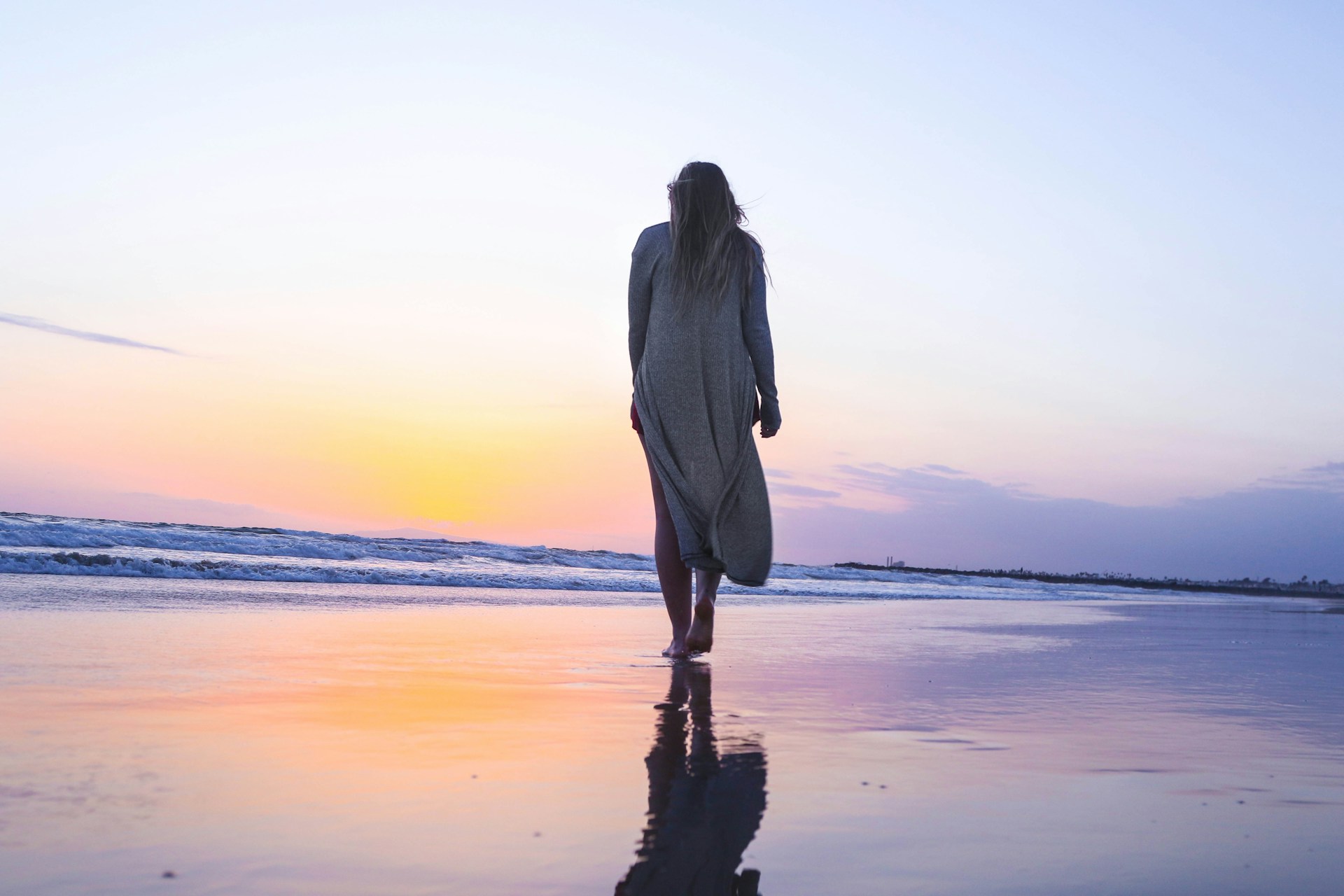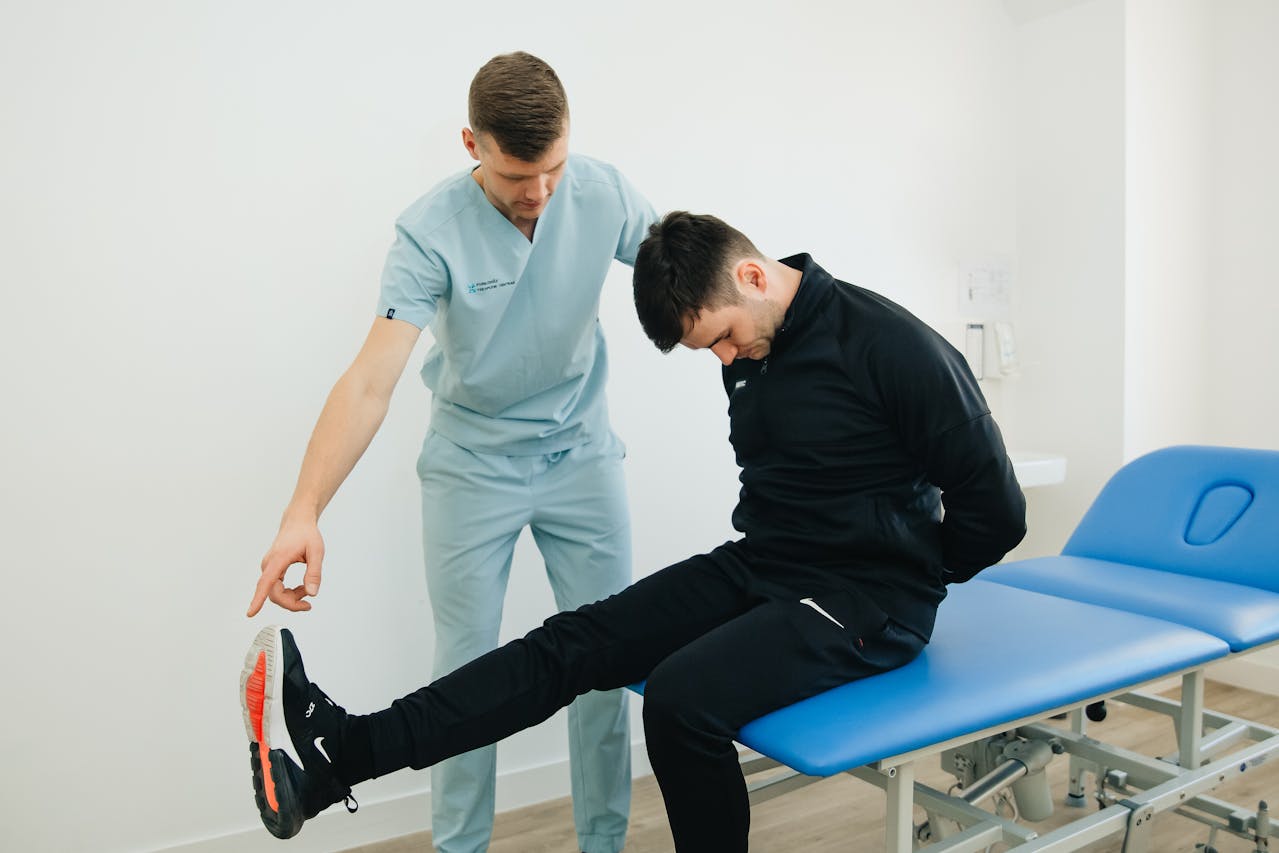Varicose Vein Symptom #1: You have visible spider veins
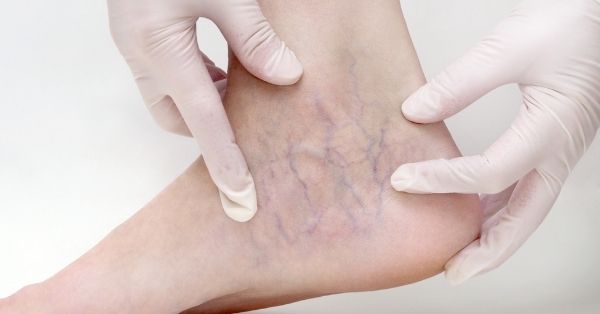
While spider veins are mostly a cosmetic issue, they along with varicose veins and leg swelling may be a warning sign of underlying vein disease. This is why it’s important to visit a vein specialist for a full evaluation before receiving cosmetic spider vein treatment. In fact, at VSS we train doctors from across the country on the latest treatments for spider and varicose veins.
Varicose Vein Symptom #2: Your legs hurt or feel uncomfortable
Many people with varicose veins experience pain, cramping, and discomfort in their legs. Besides visible varicose and spider veins, pain is the main symptom that brings patients into our Georgia vein clinic.
Varicose vein pain and discomfort are often worse after standing or sitting for long periods of time, as well as during pregnancy. The pain seems to get better with rest, elevation, and wearing compression. If you have unexplained leg pain, heaviness, fatigue, or itching, it’s a good idea to seek an evaluation at a vein clinic to see if venous disease could be the cause.
Not all leg discomfort is caused by venous disease, but you should see a doctor if you experience frequent, unexplained leg pain or discomfort, such as itching, heaviness, fatigue, or cramps.
Varicose Vein Symptom #3: Skin changes on your legs and ankles
One of the surprising signs of varicose veins is skin changes. If you have skin changes in the leg and ankle area it could be a ‘red flag’ of venous blood pooling in the legs. As the blood pools, delivery of oxygen and impaired removal of excess fluid from the surrounding tissue can damage the skin.
Stasis dermatitis, or stasis eczema, is a type of skin inflammation that develops if your vein problems are neglected. Signs of damage include itching and scaling of the skin, thickening of the skin, or discoloration of the skin in the lower leg. In some cases, open sores (venous ulcers) can develop. If you have this type of eczema, you’ve likely tried topical steroid creams and moisturizers on your skin, with little improvement. If so, it may be time to visit a vein specialist. If you have these concerns it is important to get this checked out by your vein specialist.
Varicose Vein Symptom #4: Your legs swell
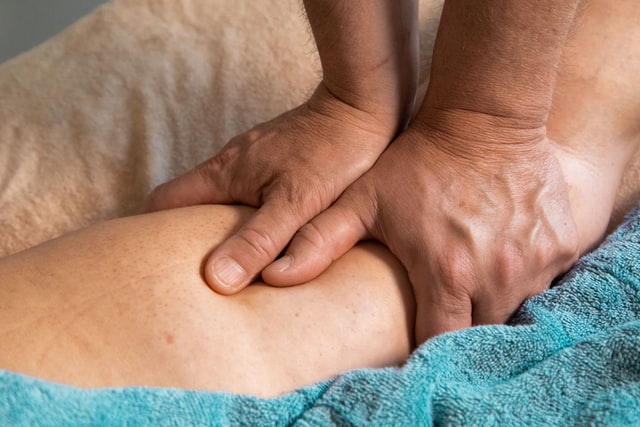
Even when you don’t see varicose or spider veins on your legs, other visible signs you may have venous disease can include skin changes and leg swelling.
Swelling in the legs – also known as edema – can come from a number of conditions. One of the common conditions is underlying varicose veins. When the check valves in your veins are not working properly, blood can pool in your legs and ankles. The pooling gets worse when you are up on your feet causing heavy aching legs, fatigue, and swelling.
Varicose Vein Symptom #5: You’ve developed restless legs
Restless legs at night can also be a sign of varicose veins, even when you don’t have visible varicose veins.
Restless leg syndrome (RLS) is a condition that causes an uncontrollable urge to move the legs, usually at night when you’re trying to sleep. This is often accompanied by a tingling or prickling sensation. RLS can be caused by several different things, including iron deficiency and nerve damage. However, varicose veins can be a source of restless legs. If you’ve ruled out other causes for your RLS, or you have restless legs and other varicose vein symptoms, we recommend seeing a vein specialist for an evaluation.

